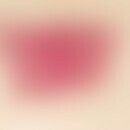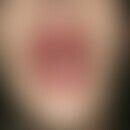Synonym(s)
DefinitionThis section has been translated automatically.
Quinoline derivative (5-chloro-7-iodo-8-quinolinol) widely used as an antiseptic and chemotherapeutic agent with antibacterial and fungicidal activity. Strong effect on Entamoeba histolyticum.
Antiseptic, see also dyes.
IndicationThis section has been translated automatically.
You might also be interested in
Dosage and method of useThis section has been translated automatically.
Topical: Apply 2 times/day to the affected areas of skin.
Systemic: Oral 3x 0.25g/day, max. application time 4 weeks. Cave: Side effects with longer use (especially in the Japanese population (Smon disease
Standard concentrationThis section has been translated automatically.
2-10% in creams, ointments (e.g. 2% clioquinol cream - Rp: clioquinol cream 0.5-2%; also in combinations with flumetasone pivalate), shaking mixtures and as pure substance in powders.
Notice. Stains skin, clothing and objects yellow!
Undesirable effectsThis section has been translated automatically.
In case of systemic application: SMON disease (Subacute Myelo-Optico Neuropathy; nerve disease that can lead to blindness, used to occur only in Japan).
IncompatibilityThis section has been translated automatically.
PreparationsThis section has been translated automatically.
Linola-Sept, vioform,
LiteratureThis section has been translated automatically.
- Konagaya M (2015) SMON: toxicity of clioquinol and the status quo. Brain nerve 67:49-62
- Sulzberger MB et al (1948) Vioform in dermatologic therapy with particular reference to its use in different vehicles. Arch Derm Syph 58:224-230





